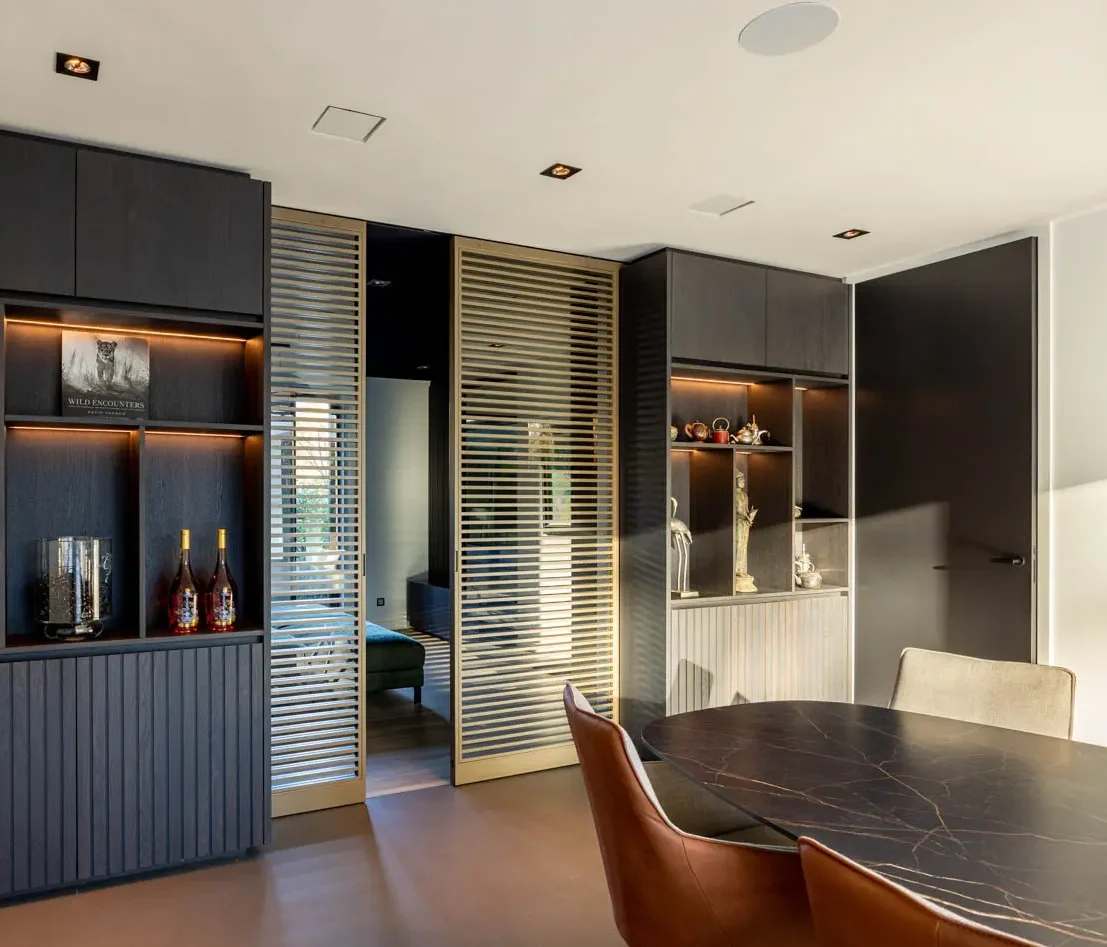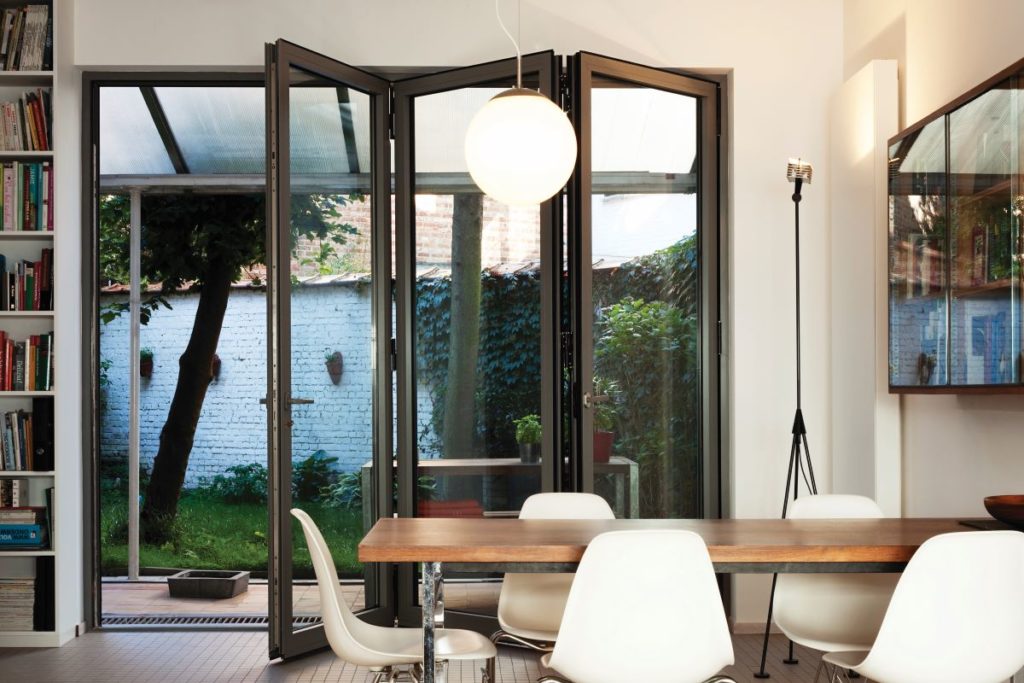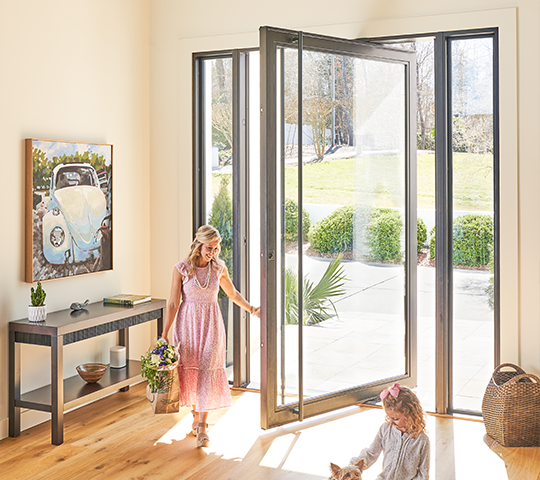Lower your energy bills and improve home comfort with a thermally broken door
When you purchase a new window or external door for your home, your initial thoughts probably revolve around things like looks and cost. However, thermal regulation is just as important, especially if you live in an area that’s prone to harsh weather conditions.
A thermally broken door uses thermal break technology to insulate the interior of your home, preventing heat loss and improving energy efficiency. In this article, we delve into the science of thermally broken doors and the benefits of adding them to your home.
The Science Behind Thermally Broken Doors
The term thermal insulation refers to the reduction of heat transfer between two places. For example, the interior of your home and outside your home. In thermally broken doors and windows, this is achieved with the use of materials with low thermal conductivity. Metal is an excellent conductor of heat, which means that you can lose a lot of heat through your door’s metal frame. By installing thermally insulated materials between the conductive materials of your door, known as a thermal barrier or thermal break, you can drastically reduce heat loss.
Thermally broken doors work to prevent thermal bridging; defined as weak points in building structure that allow heat to pass through more easily. Heat always moves towards cold, which can cause your house to lose heat in cold weather. Even though heat will still be able to pass through the conductive components of a thermally broken door, the use of thermal break technology will make it much more difficult for heat to cross your threshold.
Energy transfer through a door or window can be measured through the use of u-values. For example, the Ug value determines the thermal performance of the glass panel. However, it’s the Uw value that you need to focus on because this measures the amount of heat lost through window glazing and the window frame. The lower the value, the less heat is transferred, making the structure more efficient. It’s important to check your local building regulations to ensure your steel windows and doors are up to standard.
The Components of a Thermally Broken Door
Steel and iron doors are a popular choice for homeowners because of their strength, durability, and wide range of custom design options. However, metal conducts heat very easily.
Thermally broken doors contain a rigid polyamide, polystyrene, or polyurethane material, which is mechanically locked between the door’s metal framing components. This ensures that the metal parts don’t touch, reducing heat conduction. Therefore, even if the outside frame gets cold, it won’t pass to the interior side of the steel door frame.
The Advantages of Thermally Broken Doors
Thermally broken doors are not just useful in extremely cold or hot environments. They can be beneficial for any homeowner. At Clark Hall, we offer a white glove experience, working with you from start to finish to help you achieve your dream entryway that’s both secure and aesthetically pleasing. So, if you’re considering installing a thermally broken door, but don’t know where to start, contact us and we will walk you through the process.
Below are some of the advantages of installing a thermally broken door:
Energy Efficiency and Cost Savings
Perhaps one of the best benefits of thermally broken doors is energy efficiency because they are designed to reduce heat flow in both directions. This puts less strain on your heating system to keep the house warm and therefore, reduces your energy bills.
Enhanced Comfort Level
Thermally broken doors are very effective at regulating the temperature inside your home, no matter what the weather is outside! You may also want to consider impact doors and windows if you live in an area that’s prone to hurricanes and other extreme weather conditions. In addition, thermally broken doors reduce noise pollution because of their thicker build when compared to normal doors. This is a very handy feature if you live on a busy road.
Prevention of Condensation
Have you ever seen beads of water seeping through your window panes or door frame? This is caused by condensation which can lead to mold growth and material degradation. Building regulations state that the ideal humidity level inside the home should be 30-50%. If it’s higher or lower it can affect building materials and even human health.
Maintenance and Care for Thermally Broken Doors
At Clark Hall, all of our thermal break doors are crafted from wrought iron and steel, equipped with a high-performance insulator material. So, they require less maintenance than wooden doors. However, upkeep is essential to keep your doors in good condition for years to come.
We recommend that you clean your doors and windows at least twice a year with a clean cloth and mild soap to prevent dust and debris build-up. The risk of rust with steel and iron doors is minimal but it’s still a good idea to routinely check for scratches and touch up where necessary. We have the longest warranty in the industry, giving you peace of mind that your new door or window will not only last for decades but also add value and visual appeal to your home.
Ready to update your home? Contact us for more information about our process and thermally broken door options.
Frequently Asked Questions
What are the advantages of thermally broken doors and frames?
Thermally broken door systems prevent heat loss from the inside of your home to the outside, even in harsh winter conditions. They also drastically reduce noise pollution and can improve the value of your home, as well as add an extra layer of security for your peace of mind.
What is the purpose of a thermal break?
Thermal break materials are placed between the internal and external metal halves of a door to prevent conductive heat and energy transfer. Metal is an excellent conductor of heat but by adding a non-conductive material, such as polystyrene and polyurethane, between the metal frames, you can regulate the internal temperature of your home more effectively.
What is a thermally rated door?
At Clark Hall, we offer thermally broken steel doors that enhance the energy rating and thermal performance of your home. The term “thermally rated” simply means that doors and windows have been measured using a u-value to determine the energy efficiency of the structure. The lower the u-value, the less heat is transferred between the internal areas of your home and the outside of your house.






